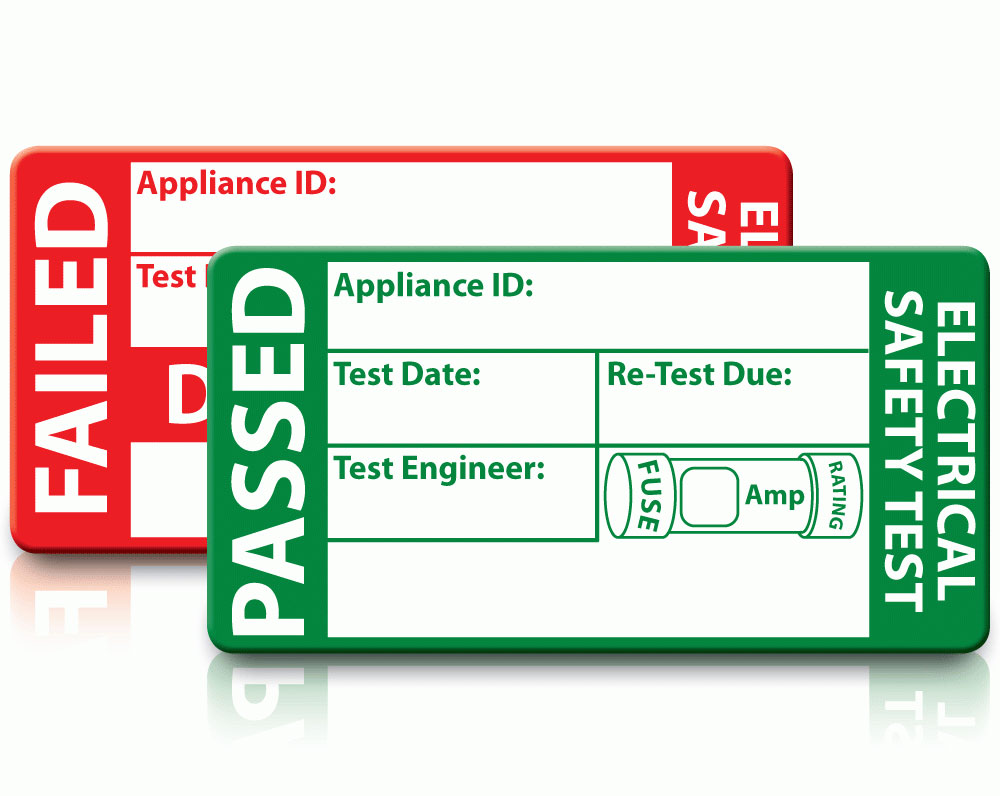PAT Testing
PAT Testing
Electrical Equipment
Even after over 100 years of using the stuff, electricity can still kill you! Some organisations still don’t believe it but here are some
facts:
- According to the Health and Safety Executive 1000 accidents occur at work each year that involve electric shock or burns. About 30 of these are fatal.
- Faulty electrical appliances and leads are the main cause of accidental fires in commercial buildings, representing over a quarter of all such fires.
- The Electricity At Work Regulations 1989 state “ every employer shall ensure, that work equipment is maintained in an efficient state, in efficient working order and in good repair”.
“During the thousands of inspections, we have carried out most of the faults we find are down to HUMAN INTERVENTION!”
Most of the time faults are caused by overstretching power cables, damaging power cables with chair and table legs, DIY quicks fixes, the wrong fuse fitted, overloading of extension leads, lose wiring and other accidental damage that just seem to go un-noticed.

Electrical Equipment
Even after over 100 years of using the stuff, electricity can still kill you! Some organisations still don’t believe it but here are some facts:
- According to the Health and Safety Executive 1000 accidents occur at work each year that involve electric shock or burns. About 30 of these are fatal.
- Faulty electrical appliances and leads are the main cause of accidental fires in commercial buildings, representing over a quarter of all such fires.
- The Electricity At Work Regulations 1989 state “ every employer shall ensure, that work equipment is maintained in an efficient state, in efficient working order and in good repair”.
“During the thousands of inspections, we have carried out most of the faults we find are down to HUMAN INTERVENTION!”
Most of the time faults are caused by overstretching power cables, damaging power cables with chair and table legs, DIY quicks fixes, the wrong fuse fitted, overloading of extension leads, lose wiring and other accidental damage that just seem to go un-noticed.
PAT Testing Legislation
The Four main types of legislation that apply to the testing of in-service electrical equipment are:
The Management of Health and Safety at Work regulations (MHSWR) 1999, amended 2003
In order that the HSWA can be effectively implemented in the work place, every employer has to carry out a risk assessment to ensure that employees and those in his/her employ are not subjected to danger.
The Health and Safety at Work Act (HSWA) 1974
Applies to all persons, employers and employees at work, and places of duty of care to ensure the safety of themselves and others.
The Electricity at Work Regulations (EAWR) 1989
In order that the HSWA can be effectively implemented in the work place, every employer has to carry out a risk assessment to ensure that employees and those in his/her employ are not subjected to danger.
The Provision and Use of Work Equipment Regulations (PUWER) 1998, amended 2002
Work equipment must be constructed in such a way that it is suitable for the purpose for which it is to be used. The employer is responsible for this.
What Needs PAT Testing?
Types of Appliances And Examples
Hand Held Appliances – Any appliance that has to be gripped or held during use:
- Hair dryer
- Drill
- Electric whisk
- Inspection lamp
Movable Appliances – any electrical item weighing less than 18kg that can be moved and is not fixed to a stationary object. Or any electrical item with wheels or castors:
- Welding machine
- Vacuum cleaner
- Air conditioning unit
Portable Appliances – Any electrical item that weights less than 18kg and is intended to be moved, or can easily be moved whilst connected to the electricity supply:
- Kettle
- Toaster
- Food mixer
Information Technology Appliances – Or business equipment containing sensitive electronic components:-
- PC’s
- Monitors
- Telephone systems
- Printers
- Copiers
- Fax machines
Fixed Appliances – An electrical item that cannot be moved because its securred to a wall or permanent support:
- Hand dryers
- Wall mounted air con units
- Pillar drills
Extension Leads – All power cables, extension sockets, extension reels, gang sockets, multi way adaptors, standard computer cables (kettle leads) IEC leads and RCD’s should all be tested.
Stationary Appliances – Any electrical item weighing more than 18kg thatis not intended to be moved during use but is not fixed:
- Vending machines
- Refridgerator
- Washing machine
- Dish washer
Built In Appliances – Any electrical item that is to be installed inside a recess or cupboard where one or more sides of the appiance are protected by its surroundings:
- Built in ovens
- Hob
- Dishwashers
- Fridges.
PAT Testing FAQ
Does my business require PAT testing?
All electrical systems and appliances are required by The Electricity at Work Regulations 1989 to be maintained in a safe condition. PAT testing is the easiest, cheapest and most viable way of ensuring all electrical systems and appliances are maintained to the correct standard.
What type of items require testing?
- Hand held Appliances
- Portable Appliances
- Stationary Appliances
- Movable Appliances
- Information technology Appliances
- Extension leads
- Fixed Appliances
How do I work out how many items I have that need PAT testing?
The easiest way to establish the number of items that require testing is to survey each room within the company. This will include offices, kitchens, storage rooms, rest rooms etc
Surveying a room:
- Once you have entered the room start at the left side working your way round the room.
- Count all appliances in the room. Most office desks will have 6 items (phone, PC, Monitor, phone charger, extension lead etc)
- Printers generally have 2 items
What happens next?
Once you have a rough idea how many items need to be tested contact us on
01268 947001 for a free no obligation quote, or use the contact form below.

